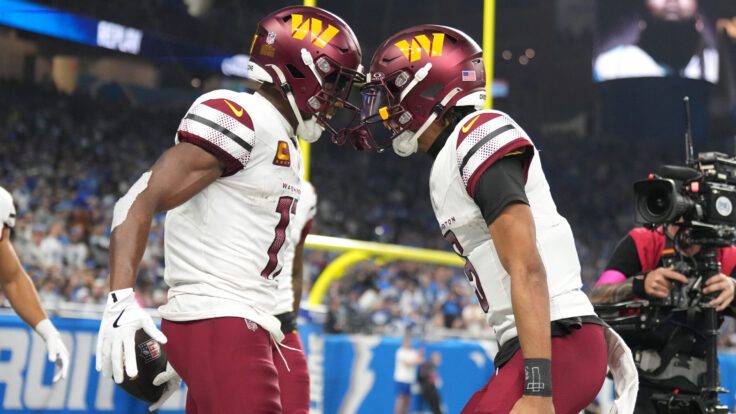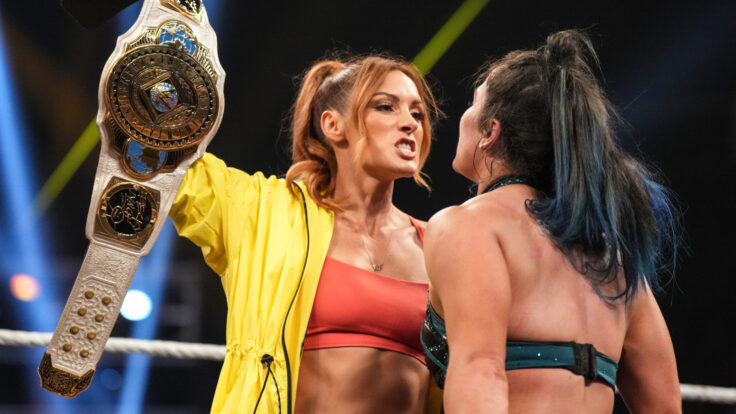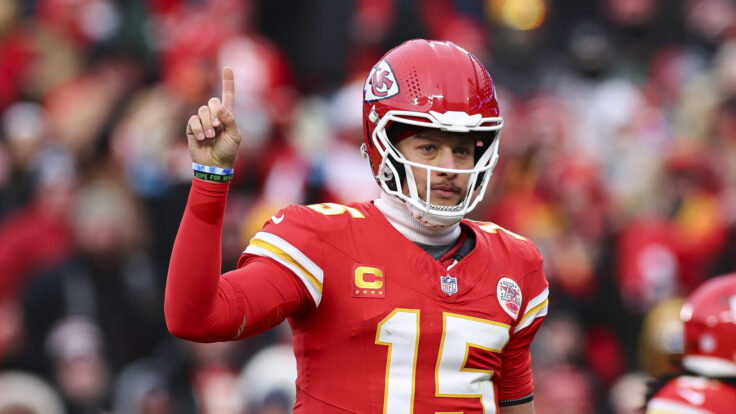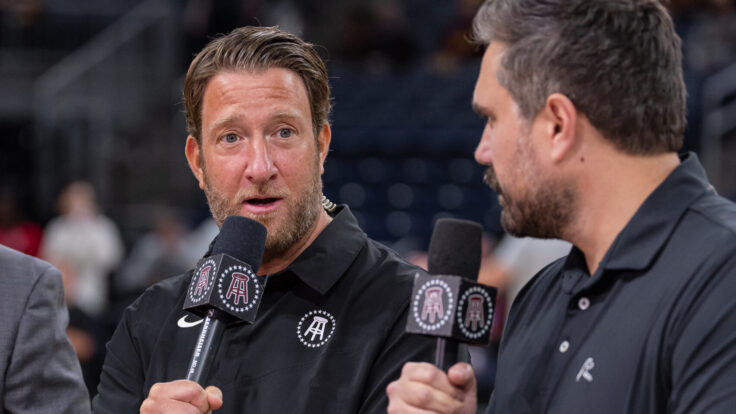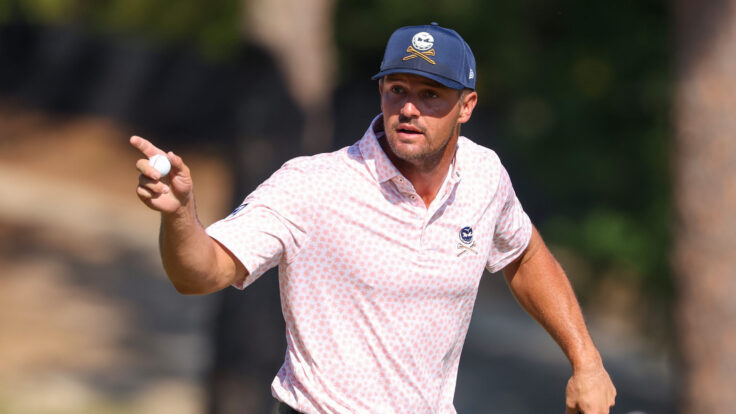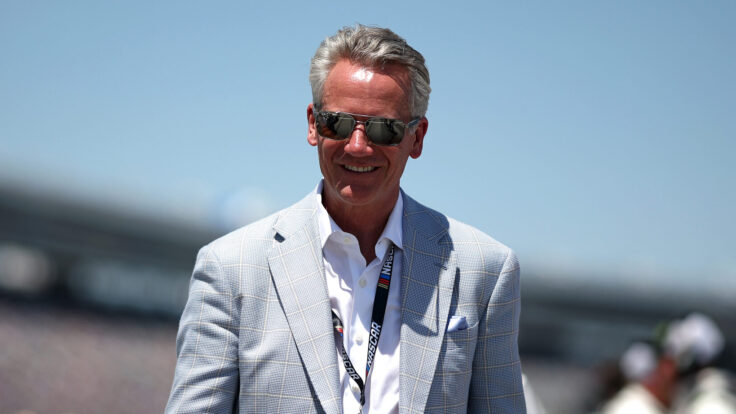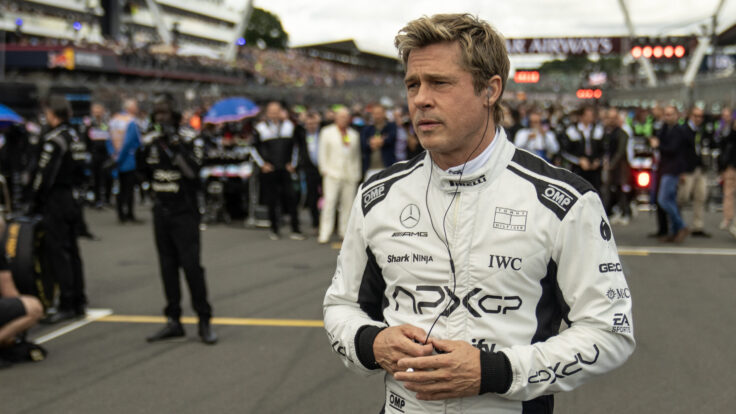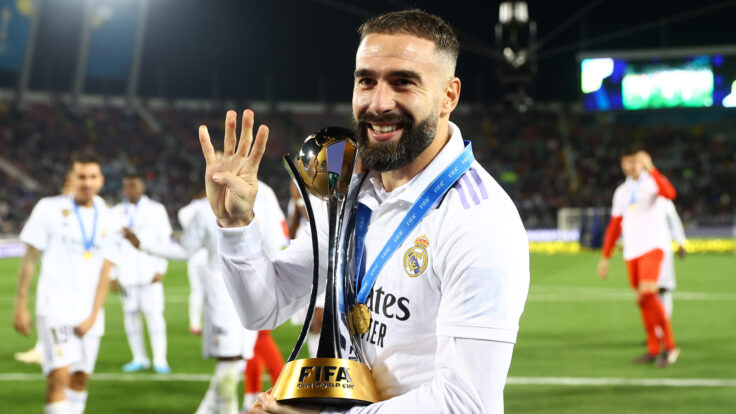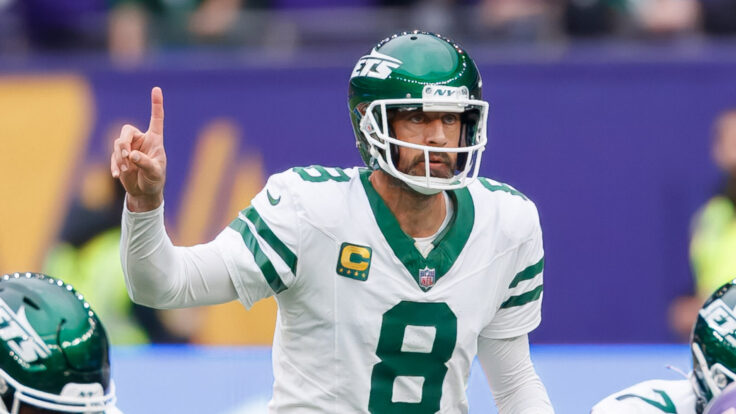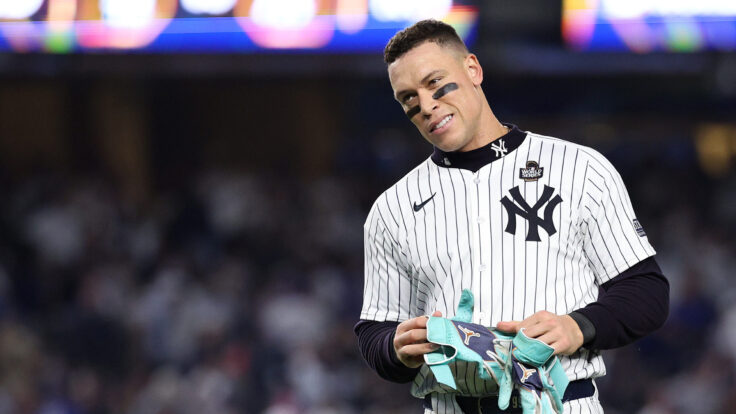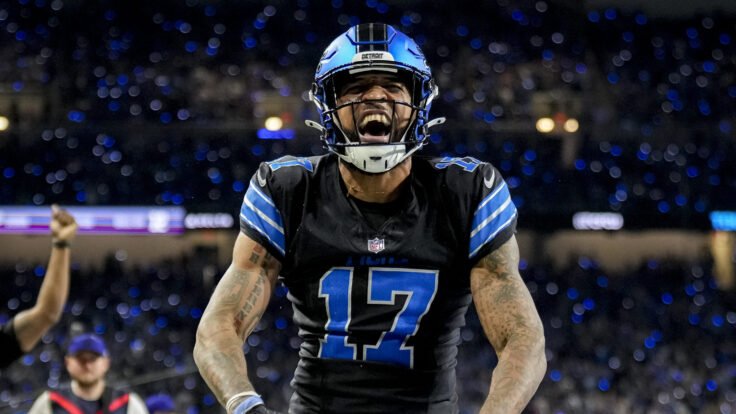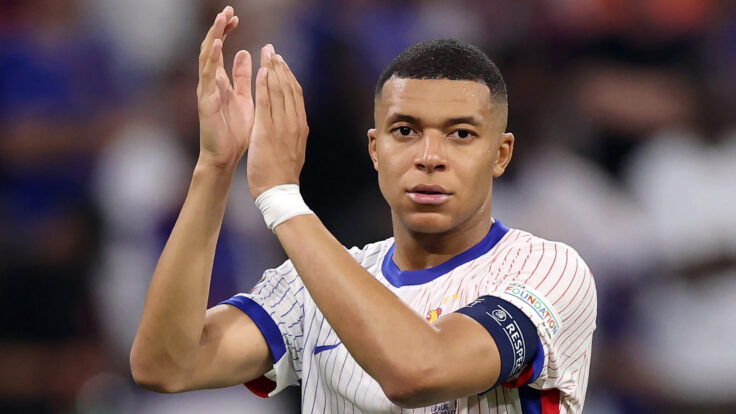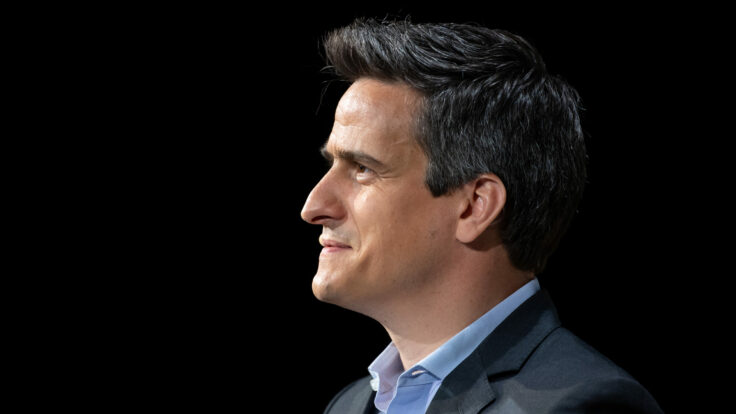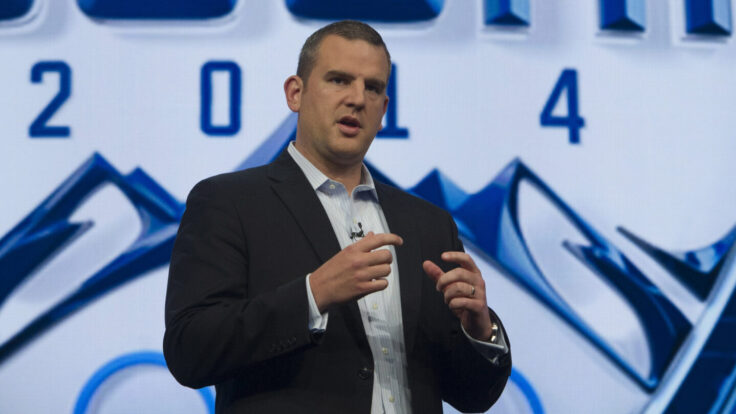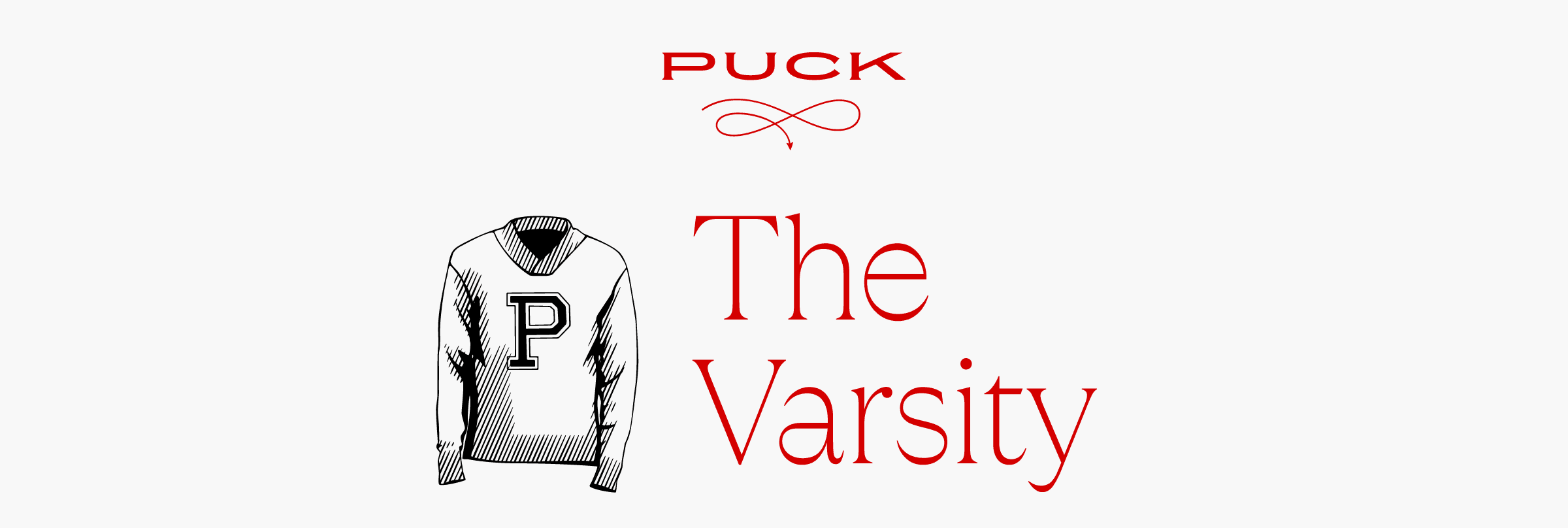 |
 |
|
Welcome back to The Varsity, my twice-weekly private email on the sports business intelligentsia, coming to you today from my hometown of Washington, D.C., where Gotham FC was feted at the White House this morning, the first NWSL team to receive such an honor. More on that below.
🎧 Programming note: Make sure you listen to Peter Hamby’s The Powers That Be podcast today, if only to hear the inimitable Jon Kelly’s laugh-out-loud prediction about his beloved Jets: “I think this is our year. We’re going all the way.” I mean, even Marchand knows the Jets have no chance—and that’s saying something! Still, you should listen to the pod to hear Peter and Jon talk about the NFL ratings situation this season. (They also exchange thoughts on the whole Nuzzigate drama, which I know you are too high-minded to care about...)
Also, thanks for all the great feedback about my interview with NBC’s top Olympics producers, Molly Solomon and Amy Rosenfeld, on The Varsity podcast. Look for my conversation with Dylan Byers to post on Wednesday morning.
Let’s get to it…
|
|
A MESSAGE FROM OUR SPONSOR
|
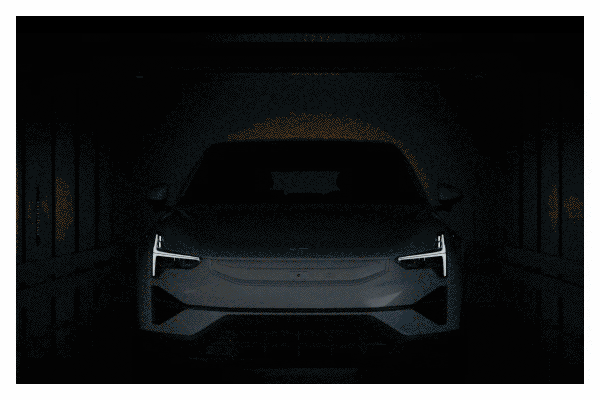 |
The electric SUV that drives like a sports car. Polestar 3. Up to 315 miles of range (EPA). 0-60 in as little as 4.8 seconds. Up to 517 hp. That's Polestar 3. This electric performance SUV delivers the power and torque of a sports car, and the luxury of a spacious interior. Be among the first to experience Polestar 3.
Schedule your test drive today |
|
|
| The Starting Five: Historic Firsts Edition |
|
- The NFL’s political coincidence: Two days before the presidential election, the NFL will be focused on critical swing states. Fox’s national game will come from Green Bay, with the Packers hosting the Lions. Later that night, NBC will carry the Eagles game from Philadelphia. The Harris and Trump campaigns plan to invest heavily throughout Wisconsin, Michigan, and Pennsylvania in the run-up to the election, but my sources say that this timing is merely coincidental. At the very least, don’t expect any of the networks to give the Panthers a national audience that week…
TV networks prioritize viewership above all else, and the Packers, Lions, and Eagles should all draw large audiences, given their playoff expectations. This is true in every sport. To wit: Fox and TBS are praying that the Yankees and Dodgers, two teams from safe blue states, will make deep playoff runs and meet in the World Series. But, in an election year, swing states can represent a safety net if one or both of those franchises falter, especially in lower-wattage Major League Baseball. Last year, the World Series averaged 9 million viewers per game, less than half of an average SNF. If Fox gets the Phillies instead of the Dodgers in the NLCS, network executives will happily accept that consolation prize and the supplemental revenue from political advertising. Ditto TBS executives if they are stuck with the Tigers over the Yanks.
- A Big 12 deal: CBS’s decision to sublicense Big 12 basketball games from ESPN offers a unique window into how each of these entities views media rights. Big 12 commissioner Brett Yormark, who has been adamant about selling his conference’s basketball rights separately, thinks that college hoops are dramatically undervalued—sold for a song when packaged with football rights. For Yormack, any deal that moves his games off of ESPN+ and on to a broadcast or cable network portends a higher value for his overall rights deal, which comes up for renewal in 2031. CBS, for its part, wanted more top basketball games in support of its March Madness centerpiece. And ESPN, which has seemingly endless college basketball inventory and loads of future costs as it rolls out its streamer, is happy to accept the passive income.
- A monumental day: I generally don’t care much when sports teams visit the White House. Today, however, a NWSL team made its first trip to 1600 Pennsylvania Avenue: Gotham FC, which is owned by the Tisch family, with Sue Bird and Eli Manning among its minority stakeholders. Star player Ali Krieger called the honor “a pivotal moment for women’s sports. … Being the first is historic. But it’s even more important that we ensure that we’re not the last. We all know that we’re committed to build on this momentum for future generations.”
I’m told that the NWSL had been scheduled for a White House visit in years past, but those plans never materialized as the presidential schedule shifted.
I don’t want to make too much of this visit, which included NWSL commissioner Jessica Berman, but it does add a little more juice to the momentum surrounding the women’s league, which recently signed new media deals and negotiated a new collective bargaining agreement.
- A subscriber question, answered: A Varsity subscriber emailed me a fascinating question the other day. With the rise of multiview streaming on YouTube TV’s NFL Sunday Ticket this season, this person wanted to know how ratings were attributed. Did every game in a four-box technically receive a viewer? Only the one with audio going? Ever the reader-service concierge, I checked with a couple of sources, and here’s the answer: Networks get ratings credit when their game takes up the entire screen. When you put two or more games on a screen, Nielsen tracks the audio.
- Happy birthday, SBD: My old pub, Sports Business Daily, celebrated its 30th anniversary earlier this month. (Of course, SBD was owned by the same guys as SBJ and eventually became SBJ Daily but is always just referred to as The Daily…) So I sat down with founder Jeffrey Pollack to get a glimpse of what it was like to get the Daily off the ground. Here’s a lightning-round version of our conversation…
- How did you come up with the idea of launching a publication about the business of sports?
In the early 1990s, I was working as a political consultant and crisis communications consultant for a boutique agency. One of our clients was Major League Baseball. I started to see sports as a business. One day, flying back from L.A. to New York, I had a copy of Sports Illustrated and a copy of Variety with me. I’m on the plane and a whiskey or two in, and the lightbulb just went off.
Everyone was so pessimistic at the outset. Why?
We ran focus groups with potential subscribers in New York over a couple of nights, and almost everyone said they didn't need it. David Stern famously told me it would never work because it was not needed. He described sports as a small industry where people talk to each other all the time, and that’s how information is shared. And even if you could find an audience, Stern said, they’ll never pay you for it.
Still, you plowed forward.
I went to Doug Bailey, who I had known through my political consulting work. He had a company called American Political Network, which was publishing daily trade publications for the political industry—The Hotline being the most famous. He was a bit of a mentor to me, so I went to him with the idea. Why don’t we do what you’re doing for politics, for sports? There was a very quick yes.
When did you know that it would work?
All those focus groups said they wouldn’t subscribe, but within six months of launch, they were probably all subscribers. The lightbulb went off on the first issue because the stories we were covering were totally unprecedented—a whole section on the MLB strike, the NHL just signed its first Fox broadcast deal for $155 million. The NFL was talking about realignment. The Bucks and the A’s were up for sale. You couldn’t script that moment any better.
|
 |
| Fox’s Friday Night Lights |
| As the Big Ten expanded, Fox tried to extend its successful noontime programming strategy to another traditionally uncompetitive dead zone: Friday nights. So far, it’s working. |
|
|
|
| When programming their schedules, sports TV executives tent to adhere to certain truisms. Five years ago, for example, everyone around college football clamored for primetime Saturday night windows where all the networks would put their best college football games. In 2019, Fox turned that strategy on its head and started moving its most competitive games into Saturday’s noon window—Big Noon as it’s now called, not to be confused with the latest spiked seltzer concoction. Mike Mulvihill, Fox Sports’s top research executive, was among those who pushed for the move, arguing that Fox’s best game would perform better against less competition in the noon window, rather than against the other networks’ best games in primetime.
Mulvihill based the Big Noon strategy on more than a hunch. After all, more viewers watch the NFL on Sunday afternoons than in primetime, so why wouldn’t the same hold true for college? Plus, noon kickoffs have always been a hallmark of the Big Ten conference, which seeded many of Fox’s games.
By just about every measure, the move was a success. Fox’s noon window has been the most watched college football slot for three years running. In fact, it was so successful that a couple of the old Pac-12 teams considered kicking off an occasional game at 9 a.m. local time so that they could be slotted into that window. |
|
|
| Mulvihill and Fox have decided to use a similar strategy this year in another traditional scheduling dead zone. Network execs may be some of the only people in the industrialized world who do not T.G.I.F. since Friday night TV viewing is typically so sparse. But Fox has started putting competitive top 25 teams in that slot—previously occupied by WWE Smackdown—and has already seen a significant jump in viewership through the first two games. Last week, the Illinois-Nebraska overtime game attracted 4.213 million viewers—the most watched program on TV that Friday, despite the fact that neither team has been competitive in recent years. (Nebraska’s starting quarterback, Dylan Raiola, looks strikingly similar, at least physically, to Patrick Mahomes—a meme-worthy dynamic that likely helped juice the numbers.) The game’s audience more than doubled Fox’s average for Saturday primetime college football games last season (+109 percent) and brought in more viewers than any episode of WWE Smackdown, which ended its five-year run on Fox on September 6.
Fox still puts its best games in the noon Saturday window, obviously, but its executives believe that a lack of competition on Friday nights will attract big audiences to the network. Fox brass also say they’re not worried about historical viewing trends on Friday nights, especially since Nielsen started counting out-of-home viewing a couple of years ago—which has been a boon for sports ratings across the board. “The original idea behind Big Noon was to acknowledge that we were having a hard time competing in that crowded primetime space, and we looked for a friendlier competitive scenario,” Mulvihill said. “That’s largely what we’re doing on Friday nights now, too. We’re taking games that would probably get a little bit lost on Saturdays. Most of the games would probably be on cable rather than broadcast, and we’re elevating them to the broader platform and putting them on a night where they don’t have to face so much competition.”
It wasn’t so long ago that Friday nights were devoted to high school football, Saturdays to college, and Sundays to the NFL. The Sports Broadcasting Act of 1961 still keeps the NFL from playing Friday night games from early September through early December. But college has increasingly encroached on high school football’s traditional turf. To wit: ESPN and FS1 have aired Friday night college football for years—often lower-tier games.
Mulvihill’s Friday night epiphany came as the Big Ten expanded to include Oregon and Washington, among other teams, adding enough games to Fox’s schedule that it decided to create a fourth broadcast package. (Fox now has two Oregon games on its Friday night schedule.) “Each party looks out for their own best interest,” Mulvihill said. “We’re just doing it at a slightly different scale. And while we’re really happy with the numbers we’ve seen for Friday night so far, it’s not so popular that it represents some kind of threat to attendance or enthusiasm for high school football nationally. I think there’s plenty of room for us to do these games at the kind of rating that we’re seeing so far and not really have a material impact on the high school football experience.” |
|
|
| On Woj’s career arc: “The most interesting story about Woj is what a waste of talent it was for him to focus on being a news-breaker rather than a writer. Reread his book, The Miracle of St Anthony, and it’s easy to imagine Woj as the successor to John Feinstein or peer to Jeff Pearlman as the best sportsbook author of his era. As a piece of storytelling, his book is simply fantastic. He’d be a lot poorer, of course. But he’d have a legacy of great work rather than a server of tweets that were irrelevant five minutes after they were sent. The self-congratulatory nature of his news-breaking sits so poorly that it’s always been hard to reconcile this Woj with that young writer. Maybe he finds the time in his new life to take a stab at a second book.” —A sports media denizen.
On The Varsity’s pod with Molly Solomon and Amy Rosenfeld: “Fantastic interview. When I was a coordinating producer at ESPN, my old bud Amy had her office right next to mine (in the latter stages of my six-year stint there). In addition to being a groundbreaking producer and leader, Amy has a wicked, wonderful sense of humor. I loved watching the Olympics coverage, and I’m so happy that the world is getting a taste of how fabulous Amy is.” —A TV sports producer, via LinkedIn
More on Molly and Amy: “I love that you emphasized the craft of our business. I worked with Amy at ESPN, and she did a great job on international football, among other projects. I can’t think of many executives who would willingly lead a monumental project like the Olympics in Paris (!) and be willing not to be there in person, even if the best approach (which they proved) was to operate out of Stamford.” —A former ESPNer
On Colorado’s steep ratings drop this season: “People need to stop the crap on Coach Prime’s TV ratings: 3.5 million is an incredible number for a Colorado-Colorado State blowout airing head-to-head against a No. 1 ranked Georgia nail-biter.” —A Varsity subscriber (I’d tell you if it were Deion) |
|
|
See you Thursday,
John |
|
|
|
| FOUR STORIES WE’RE TALKING ABOUT |
 |
|
 |
|
 |
| Pete Speaks! |
| Getting Pete Buttigieg’s candid views on J.D. Vance. |
| JOHN HEILEMANN |
|
 |
|
|
|

|
 |
|
|
|
Need help? Review our FAQs
page or contact
us for assistance. For brand partnerships, email ads@puck.news.
|
|
You received this email because you signed up to receive emails from Puck, or as part of your Puck account associated with . To stop receiving this newsletter and/or manage all your email preferences, click here.
|
|
Puck is published by Heat Media LLC. 227 W 17th St New York, NY 10011.
|
|
|
|
